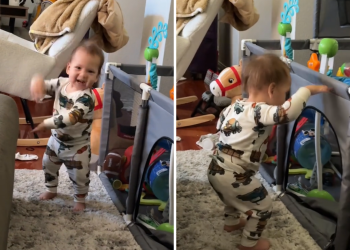HANNAH BATES: Welcome to HBR on Leadership—case studies and conversations with the world’s top business and management experts, hand-selected to help you unlock the best in those around you.
Sometimes you get stuck in a negative rut with someone at work—maybe it’s your boss, a coworker, or even a direct report. But if you want to turn that relationship around, where do you begin?
HBR contributing editor and workplace conflict expert Amy Gallo says repairing a broken professional relationship will improve your work life—but it isn’t easy, and you might need to make the first moves.
In this episode, Gallo breaks down the different types of relationship problems that are common at work, and the steps you can take to move forward, starting with more empathy and less ego.
This episode originally aired as part of the HBR Guide video series in May 2024. Here it is.
AMY GALLO: Sometimes you get stuck in a rut with someone at work– a boss, a co-worker, a direct report. Perhaps there’s bad blood between you, or you simply haven’t been getting along. Or you never seem able to get past bland pleasantries.
What can you do to turn the relationship around? Is it even possible to start anew? The good news is that even some of the most strained relationships can be repaired. In fact, a negative relationship turned positive can result in one that’s stronger and more resilient.
The bad news is that fixing a relationship takes serious effort. Many people will just lower their expectations rather than deal with it. But the hard work is often worth it, especially when your productivity and performance are at stake. Here are some tips on how to fix a broken work relationship.
Susan David, author of the book Emotional Agility, says there are two ends of the spectrum when it comes to relationship problems. You may be on what she calls the over competent end of the spectrum, where you’re just in a rut with the other person and your relationship never gets past the polite daily, hey, how are you. On the other end of the spectrum, you may be what she calls overchallenged, where you’re actively disagreeable with each other, always walking on eggshells and never seeing eye to eye.
Once you’ve determined the type of broken relationship you’re dealing with, you can start taking steps to repair it. To move forward, give up being right. Step 1 may be the hardest hurdle to get over, but it’s essential if you’re serious about putting the relationship back on track. You need to put your ego away.
We often get fixated on who’s wrong and who’s right. And let’s face it, we all picture ourselves as the one who’s right, right? But you can’t start to repair the relationship with that distraction hanging over you, even if you are indeed right. Yes, this requires being the bigger person, but Susan David has a fun suggestion for helping you do this.
She recommends imagining the other person with a big fat sticker on their back that says, I’m wrong. That way you don’t have to point out that they’re wrong. You already know it. Then you can just focus on moving the relationship forward, not backwards.
Resist your tendency to analyze every negative detail of what’s happened in the relationship, who said what, what did they say, why did they say it. This kind of rehashing generally isn’t productive. Instead, if you must look back, focus on what, if anything, worked well previously, what, if anything, you like about the person, and especially what you want from the relationship.
If the relationship has never worked and you truly can’t find something you like about that person, focus on the last part, what you want. That will allow you to get things moving forward. And as Susan David says, take a solution-focused approach, not a diagnostic one.
One skill that will really help here is empathy. It’s the foundation of all healthy work relationships. You make room for emotions like curiosity and compassion by asking yourself a series of questions about your coworker.
How did they see things? Are they feeling embarrassed, put upon, misjudged, or misunderstood? What do they want from the relationship? What do I not know or understand about them?
This internal work to see your colleague in a different light will help you begin resetting the emotional tone of your relationship. Then it’s time to act and engage with the other person. Find common ground, literally and figuratively.
When you approach the other person, be sure it’s on neutral territory, not at one of your desks or offices. Consider going out for lunch or having a virtual coffee date. Then, instead of debating what went wrong and who is at fault, try to create a space where you’re aligned. It can be helpful to focus on the bigger picture, like a common goal you share or a challenge you’re both up against in the organization, what might help you and the other person feel like you’re in this together.
Fortunately, it often takes very little for people to perceive that they are similar. You should know, though, one coffee or one Zoom call isn’t going to fix everything. It’s typically the small everyday stuff that adds up to bigger change. Susan David explains that the real shifts in relationships happen less in those watershed moments and more in your everyday actions.
Sitting down and talking is helpful, but it’s not where the real work happens. You need to make an effort to change the tone and tenor of your everyday interactions.
Show don’t tell. Overall, rational arguments are not going to win the day here. Brian Uzzi, a leadership professor at Northwestern’s Kellogg School of Management, says you shouldn’t try to convince the other person that you’re trustworthy by talking about it. Instead, demonstrate it.
One smart way, Uzzi says, is to offer things to the other person without asking for anything in return. This will activate the law of reciprocity and encourage the natural give and take that’s a part of most healthy relationships. And be sure to keep your word as being true to things you’ve promised will continue to deepen the relationship and prevent it from slipping into mistrust.
Another way to build rapport is to ask questions, says leadership coach Caroline Webb, especially questions that get beyond the daily, hey, how are you. People always find it rewarding to talk about themselves or share their opinions. The trick is to move beyond factual questions, like when’s the presentation due, to what Webb calls quality questions.
Instead of asking, how was your weekend, ask what your colleague did specifically. And follow up with something like, that’s interesting. How did you end up doing that?
If you don’t have a personal relationship, ask questions that signal you value their opinion. How do you think that meeting went? Or what are you working on at the moment?
The goal with these questions is to establish that figurative common ground, a shared psychological space that’s less about either of you and more about creating a connection.
Give and receive feedback. This tactic isn’t always possible, but if you’ve made fruitful steps toward repairing the relationship and you think your colleague is open to it, you might want to give them some feedback about the process. You can share observations with the intention of improving how you interact in the future.
People don’t always know how they come across, and if your coworker’s behavior with you is something that regularly gets in their way professionally, you may be giving them news they can actually use and will appreciate. Focus on behaviors that they can control. Describe how they affected you and your work together with the aim of supporting change. Your carefully framed Feedback may help them develop greater self-awareness and increase their effectiveness.
And of course, be open to hearing feedback yourself. If you’re seeing some things that your colleague might change, chances are they’ll have their own observations to share with you. OK, let’s review.
Work is not a perfect place, and humans are messy. But when we don’t get along with people at work, it doesn’t have to be scary or threatening. We can take steps to mend the relationship, and often rough patches can result in stronger, more resilient relationships in the process. We learn about each other and ourselves as we make the next conflict less likely to occur or at least easier to manage.
Principles to remember, here are a few things you should do. Restore trust by offering your coworkers something they want or need. Talk about your relationship on neutral ground. Make subtle shifts in how you act toward your colleague. This is where the real change happens.
And here’s a couple things that you shouldn’t do. Don’t get stuck on who’s right and who’s wrong. Instead, focus on moving the relationship forward, and don’t assume that things will change immediately. Repairing relationships can take time.
Thanks for watching. All of the strategies I’ve shared are from HBR articles linked the description. Do you have advice about fixing broken relationships or a topic that you want me to cover in the future? Comment below. Bye for now.
HANNAH BATES: That was HBR contributing editor Amy Gallo on the HBR Guide video series. Gallo is an expert in workplace conflict and communication and she co-hosts another excellent HBR podcast, Women at Work. Her most recent book is Getting Along: How to Work with Anyone (Even Difficult People).
We’ll be back next Wednesday with another hand-picked conversation about leadership from Harvard Business Review. If you found this episode helpful, share it with your friends and colleagues, and follow our show on Apple Podcasts, Spotify, or wherever you get your podcasts. While you’re there, be sure to leave us a review. When you’re ready for more podcasts, articles, case studies, books, and videos with the world’s top business and management experts, find it all at HBR. org.
This episode was produced by Amy Gallo, Scott LaPierre, Anne Saini, and me, Hannah Bates. Ian Fox is our editor. Music by Coma Media. And special thanks to Maureen Hoch, Nicole Smith, Erica Truxler, Ramsey Khabbaz, Anne Bartholomew, and you – our listener. See you next week.




















